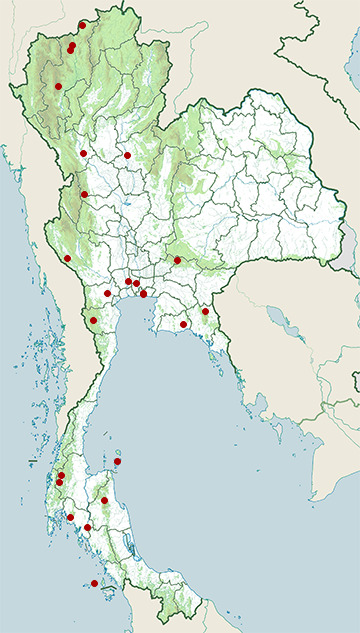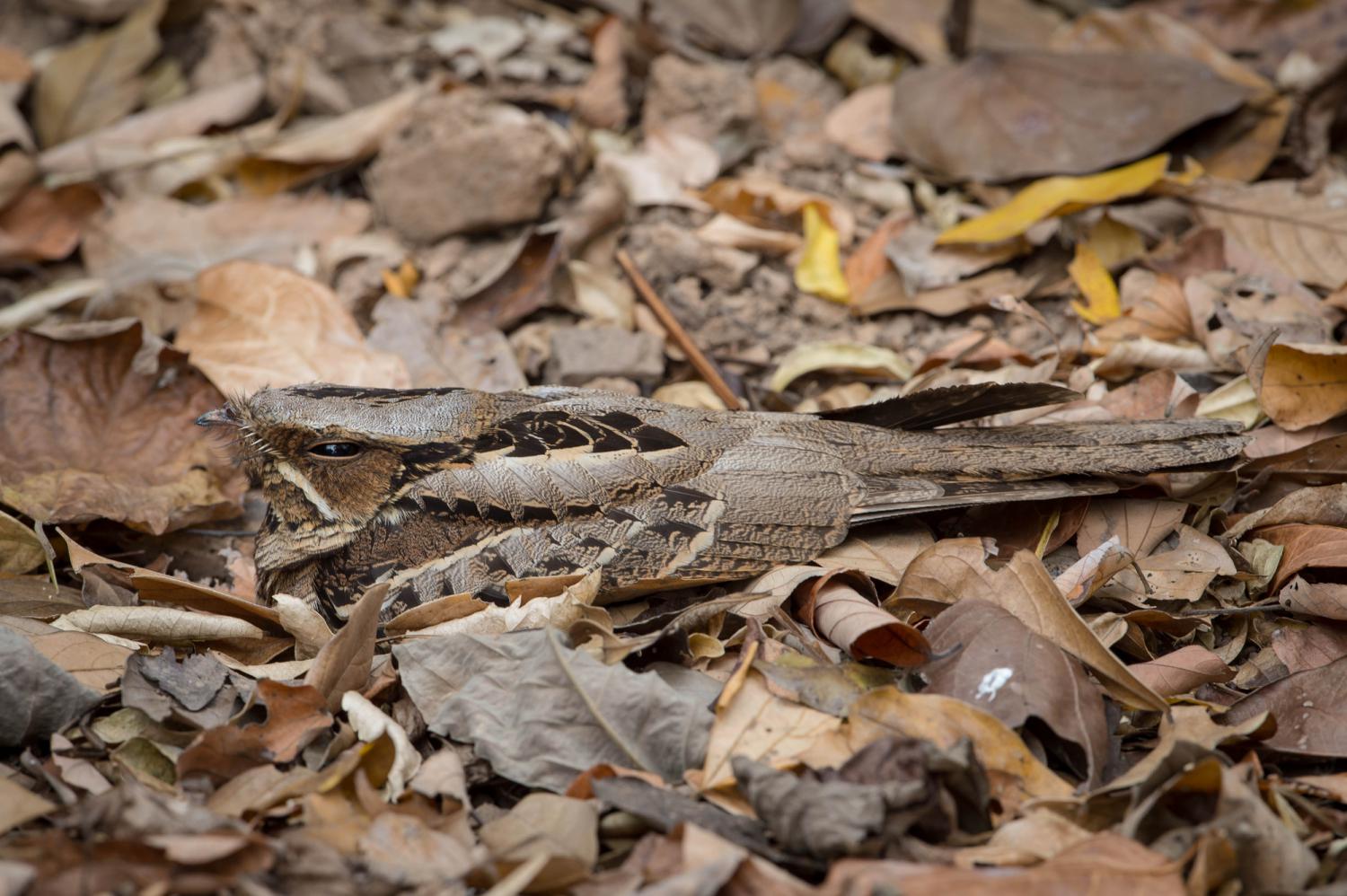Species of Thailand
Grey nightjar
Caprimulgus jotaka
Coenraad Jacob Temminck & Hermann Schlegel, 1845
In Thai: นกตบยุงภูเขา
The grey nightjar (Caprimulgus jotaka) is a species of nightjar found in East Asia. It is sometimes treated as a subspecies of the jungle nightjar (C. indicus), its South Asian relative.
This article uses material from Wikipedia released under the Creative Commons Attribution-Share-Alike Licence 3.0. Eventual photos shown in this page may or may not be from Wikipedia, please see the license details for photos in photo by-lines.
Category / Seasonal Status
Wiki listed status (concerning Thai population): Winter visitor, breeds in mountains
BCST Category: Recorded in an apparently wild state within the last 50 years
BCST Seasonal statuses:
- Resident or presumed resident
- Non-breeding visitor
Scientific classification
- Kingdom
- Animalia
- Phylum
- Chordata
- Class
- Aves
- Order
- Caprimulgiformes
- Family
- Caprimulgidae
- Genus
- Caprimulgus
- Species
- Caprimulgus jotaka
Common names
- Thai: นกตบยุงภูเขา
Conservation status

Least Concern (IUCN3.1)
Photos
Please help us review the bird photos if wrong ones are used. We can be reached via our contact us page.
Range Map

- Bang Pu Recreation Centre
- Bangkok Province
- Chiang Dao District, Chiang Mai
- Chiang Dao Wildlife Sanctuary
- Doi Inthanon National Park
- Doi Pha Hom Pok National Park
- Kaeng Krachan National Park
- Khao Luang National Park
- Khao Phra - Bang Khram Wildlife Sanctuary
- Khao Soi Dao Wildlife Sanctuary
- Khao Sok National Park
- Khao Yai National Park
- Khlong Saeng Wildlife Sanctuary
- Klaeng District, Rayong
- Ko Samui District, Surat Thani
- Mae Wong National Park
- Mueang Krabi District, Krabi
- Mueang Phitsanulok District, Phitsanulok
- Mueang Ratchaburi District, Ratchaburi
- Mueang Tak District, Tak
- Phutthamonthon District, Nakhon Pathom
- Sai Yok National Park
- Samut Prakan Province
- Tarutao National Marine Park
